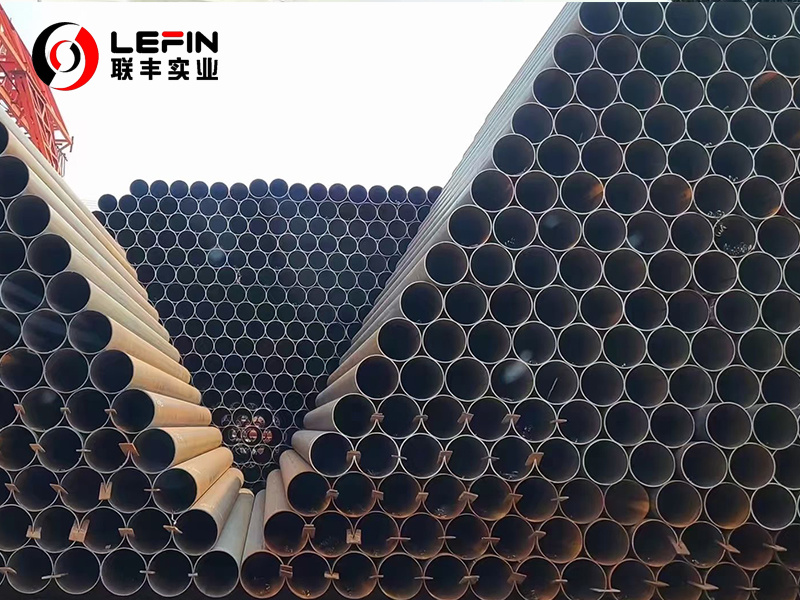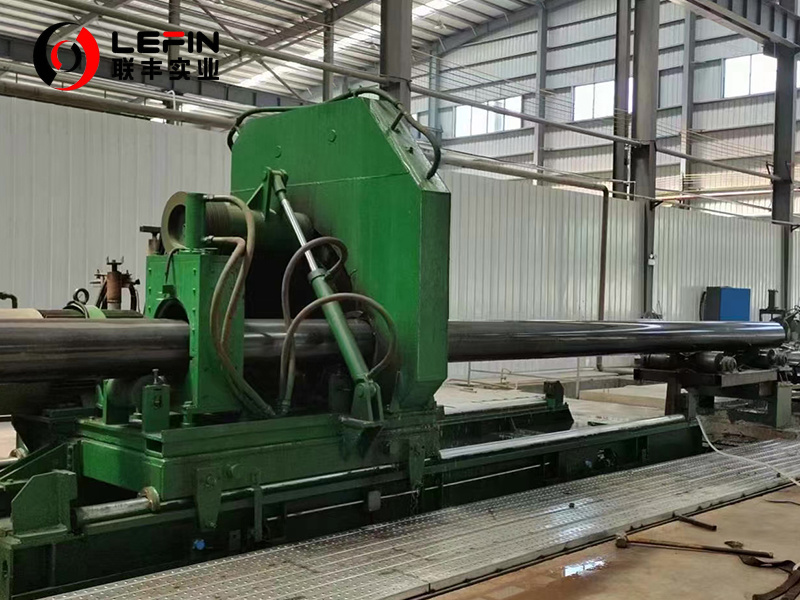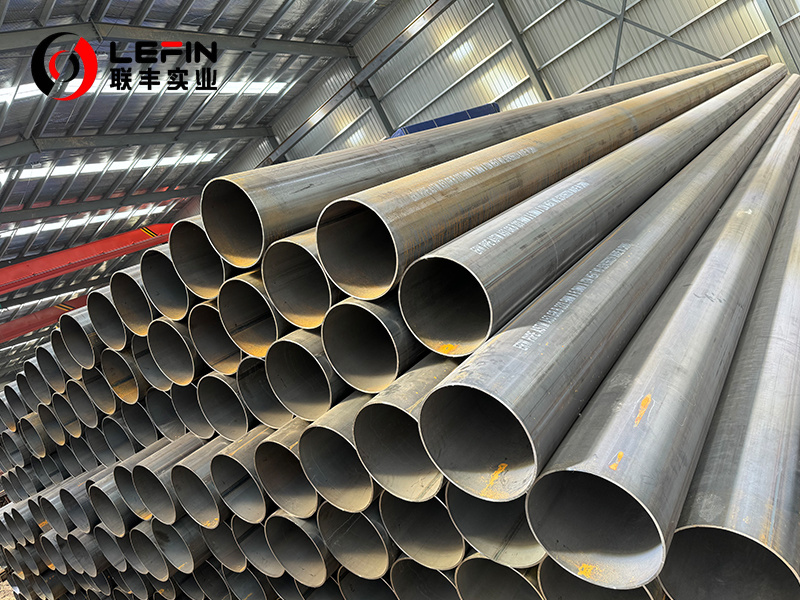


- Details
-
ASTM A53 Grade A is a specification for carbon steel pipes used in structural and low-pressure applications. It is part of the ASTM A53 standard, which includes different grades designed for specific uses. Grade A is known for its balance of affordability and adequate strength for medium to low-pressure applications.
Chemical Composition
- Carbon (C): Up to 0.25%
- Manganese (Mn): Up to 0.95%
- Phosphorus (P): Up to 0.05%
- Sulfur (S): Up to 0.045%
- Copper, Nickel, Chromium, Molybdenum, Vanadium (total): Up to 1.00%
Physical Properties
- Tensile Strength: A minimum of 330 MPa
- Yield Strength: A minimum of 205 MPa
- Elongation: Typically around 28%
These properties ensure that Grade A pipes can withstand certain levels of stress without permanent deformation or failure.
Differentiator between Grade A and Grade B
Chemical Requirements Composition,max,%
Carbon Manganese Phosphorus Sulfur Sulfur CopperA NickelA ChromiumA MolybdenumA VanadiumA Grade A 0.25B 0.95 0.05 0.045 0.4 0.4 0.4 0.15 0.08 Grade B 0.3C 1.2 0.05 0.045 0.4 0.4 0.4 0.15 0.08 A The total composition for these five elements shall not exceed 1.00%.
B For each reduction of 0.01% below the specified carbon maximum,an increase of 0.06% manganese above the specified maximum will be pemitted up to a maximum of 1.35%.
C For each reduction of 0.01% below the specified carbon maximum,an increase of 0.06% manganese above the specied maximum wil be pemitted up to amaximum of 1.65%.
- Grade B's higher carbon and manganese content result in increased strength and durability, making it suitable for more demanding applications.
Tensile Requirements Grade A Grade B Tensile strength,min,psi [MPa] 48000 [330] 60000 [415] Yield strength,min,psi [MPa] 30000 [205] 35000 [240] Elongation in 2 in.or 50 mm uaually up to 28% uaually up to 22% - Grade B's higher tensile and yield strengths make it more suitable for high-pressure applications.
CLICK HERE➡ "What Is ASTM A53 Standard"
Applications
- Plumbing and Water Supply Systems: For lower pressure needs.
- Structural Applications: In non-critical structural support roles.
- Mechanical Tubing: Depending on wall thickness and specific mechanical requirements.
Advantages
- Cost-Effectiveness: Grade A is more economical compared to higher grades.
- Adequate Strength: Offers sufficient strength for low to medium pressure applications.
- Wide Availability: Being a standard grade, it is widely available in the market.
ASTM A53 Grade A is a carbon steel pipe specification designed for lower pressure and non-critical applications. Its chemical composition and physical properties make it a cost-effective choice for applications where high strength is not a primary concern.




ASTM A53 GR.A WELDED PIPE
Subcategory
Keyword
- Details
-
ASTM A53 Grade A is a specification for carbon steel pipes used in structural and low-pressure applications. It is part of the ASTM A53 standard, which includes different grades designed for specific uses. Grade A is known for its balance of affordability and adequate strength for medium to low-pressure applications.
Chemical Composition
- Carbon (C): Up to 0.25%
- Manganese (Mn): Up to 0.95%
- Phosphorus (P): Up to 0.05%
- Sulfur (S): Up to 0.045%
- Copper, Nickel, Chromium, Molybdenum, Vanadium (total): Up to 1.00%
Physical Properties
- Tensile Strength: A minimum of 330 MPa
- Yield Strength: A minimum of 205 MPa
- Elongation: Typically around 28%
These properties ensure that Grade A pipes can withstand certain levels of stress without permanent deformation or failure.
Differentiator between Grade A and Grade B
Chemical Requirements Composition,max,%
Carbon Manganese Phosphorus Sulfur Sulfur CopperA NickelA ChromiumA MolybdenumA VanadiumA Grade A 0.25B 0.95 0.05 0.045 0.4 0.4 0.4 0.15 0.08 Grade B 0.3C 1.2 0.05 0.045 0.4 0.4 0.4 0.15 0.08 A The total composition for these five elements shall not exceed 1.00%.
B For each reduction of 0.01% below the specified carbon maximum,an increase of 0.06% manganese above the specified maximum will be pemitted up to a maximum of 1.35%.
C For each reduction of 0.01% below the specified carbon maximum,an increase of 0.06% manganese above the specied maximum wil be pemitted up to amaximum of 1.65%.
- Grade B's higher carbon and manganese content result in increased strength and durability, making it suitable for more demanding applications.
Tensile Requirements Grade A Grade B Tensile strength,min,psi [MPa] 48000 [330] 60000 [415] Yield strength,min,psi [MPa] 30000 [205] 35000 [240] Elongation in 2 in.or 50 mm uaually up to 28% uaually up to 22% - Grade B's higher tensile and yield strengths make it more suitable for high-pressure applications.
CLICK HERE➡ "What Is ASTM A53 Standard"
Applications
- Plumbing and Water Supply Systems: For lower pressure needs.
- Structural Applications: In non-critical structural support roles.
- Mechanical Tubing: Depending on wall thickness and specific mechanical requirements.
Advantages
- Cost-Effectiveness: Grade A is more economical compared to higher grades.
- Adequate Strength: Offers sufficient strength for low to medium pressure applications.
- Wide Availability: Being a standard grade, it is widely available in the market.
ASTM A53 Grade A is a carbon steel pipe specification designed for lower pressure and non-critical applications. Its chemical composition and physical properties make it a cost-effective choice for applications where high strength is not a primary concern.




Related products
Product Consulting

Address: Hengtai Road,Daqiuzhuang Town,Jinghai County,Tianjin,China
Mob: +8615122229899(whatspp)
Phone: +86 22 58171905
Fax: +86 22 58171902
E-mail:info@lefinsteel.com
Get company updates

Tianjin Lefin Industrial Co.,Ltd. All rights reserved City sub-station SEO www.300.cn

